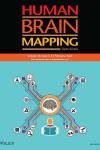Parafoveal vision reveals qualitative differences between fusiform face area and parahippocampal place area

The center-periphery visual field axis guides early visual system organization with enhanced resources devoted to central vision leading to reduced peripheral performance relative to that of central vision (i.e., behavioral eccentricity effect) for many visual functions. The center-periphery organization extends to high-order visual cortex where, for example, the well-studied face-sensitive fusiform face area (FFA) shows sensitivity to central vision and the place-sensitive parahippocampal place area (PPA) shows sensitivity to peripheral vision. As we have recently found that face perception is more sensitive to eccentricity than place perception, here we examined whether these behavioral findings reflect differences in FFA's and PPA's sensitivities to eccentricity. We assumed FFA would show higher sensitivity to eccentricity than PPA would, but that both regions' modulation by eccentricity would be invariant to the viewed category. We parametrically investigated (fMRI, n = 32) how FFA's and PPA's activations are modulated by eccentricity (≤8°) and category (upright/inverted faces/houses) while keeping stimulus size constant. As expected, FFA showed an overall higher sensitivity to eccentricity than PPA. However, both regions' activation modulations by eccentricity were dependent on the viewed category. In FFA, a reduction of activation with growing eccentricity (“BOLD eccentricity effect”) was found (with different amplitudes) for all categories. In PPA however, qualitatively different BOLD eccentricity effect modulations were found (e.g., at 8° mild BOLD eccentricity effect for houses but a reverse BOLD eccentricity effect for faces and no modulation for inverted faces). Our results emphasize that peripheral vision investigations are critical to further our understanding of visual processing.
תאריך עדכון אחרון : 31/12/2025



